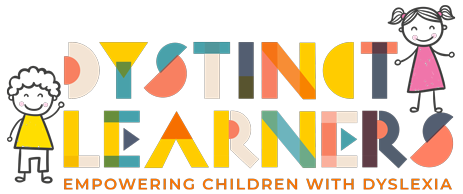Effective Strategies for Parents to Support Children with Dyslexia at Home
Dyslexia, as per the latest research published in the Journal of Child Psychology and Psychiatry, is a set of processing difficulties that affect the acquisition of reading and spelling, and also is one of the most common learning difficulties. It is very natural for parents to worry about their child’s development, but children can excel with appropriate interventions and strategies. The key is to create a learning environment that builds confidence, fosters independence, and makes literacy engaging.
In this article, we will discuss some of the most efficient and practical methods of supporting children with dyslexia at home.
Focus on areas of strength
Overcoming reading challenges is particularly difficult for children with dyslexia. It is essential to assist them in realizing their strengths and talents.
- Help them discover their interests: Whether it’s music, science, or art, finding what excites them can boost their self-confidence.
- Encourage creativity: Engaging dyslexic learners in storytelling, painting, or problem-solving activities (like puzzles, etc.) can boost their creativity.
- Highlight their progress: Celebrate small wins, like reading a few pages without frustration or mastering a new word.
Building on their strengths can make learning a more positive experience.
Enjoy Reading Together
Instead of making it feel like a boring and strenuous activity, reading can be enjoyed with the whole family.
- Perform books: Use various voices and facial expressions to animate characters.
- Use picture story books and graphic novels: They improve comprehension with the pictures.
- Design a reading nook with them: A quiet, cozy, and free-from-distraction corner invites the mind to relax.
We should aim to make reading interactive and meaningful to increase their interest and remove stress..
Changing the writing practice routine
Most learners with dyslexia struggle with writing tasks and find them frustrating. Consider these alternative strategies that may help them share their ideas without much restriction.
- Making comic strips: This allows them to draw and write conversations which will make storytelling more fun.
- Use voice-to-text tools: These tools help children dictate what they need to write before refining them into written sentences.
- Writing postcards or letters: They can write a fun-filled letter to a family member or a friend which will help in convincing them to write.
Writing becomes effortless when children find meaning in doing so.
Use technology for assistance
Technology can be a very helpful tool when trying to make reading and writing enjoyable.
- Follow along with printed text while listening to audiobooks.
- Use apps that divide words into phonemes for easier decoding.
- Try various text formats and dyslexia-friendly fonts.
The right tools can radically change your child’s experience when interacting with words.
Set up a learning routine that is stress-free
Children with dyslexia do best in environments that are structured while also being somewhat flexible.
- Start with a clear and concise study routine: Learning should be divided into 15–20-minute sessions that include a physical activity break.
- Mixing up the type of learning activities: Discussions, games and practical projects should be done alongside writing and reading.
- Encourage them to speak for themselves: Teach them to recognize when they need breaks and how to ask for support.
These strategies will supplement each other for less stress and more motivation.
Consult with a Dyslexia Specialist
While home support is very important, professional assistance guarantees that your child will get the best approaches and strategies customized for them.
- Look for structured dyslexia therapy: Professional support provides research-backed reading techniques.
- Opt for a personalized online dyslexia program: One-on-one sessions are tailored around the student’s particular challenges alongside regular progress assessments.
DYStinct Learners offers specialized online support for children with dyslexia that is customized to their learning needs from the comfort of their homes.
Advocate for Your Child’s Needs
Navigating the school system can be challenging, but advocacy ensures your child receives the support they deserve.
- Make sure there is a proper set of accommodations for your child at school
- Help teachers understand dyslexia
- Become a part of the parents’ support community
Final Thoughts
Supporting a child with dyslexia at home requires patience, creativity, and a willingness to adapt. By emphasizing strengths, making literacy engaging, and incorporating professional support, you can help your child build confidence and develop lifelong learning skills.
DYStinct Learners is here to help. Our online dyslexia programs are designed to provide the personalized support your child needs. Visit dystinctlearners.com to learn more about how we can assist your child’s learning journey.
Together, we can turn challenges into opportunities for growth!
